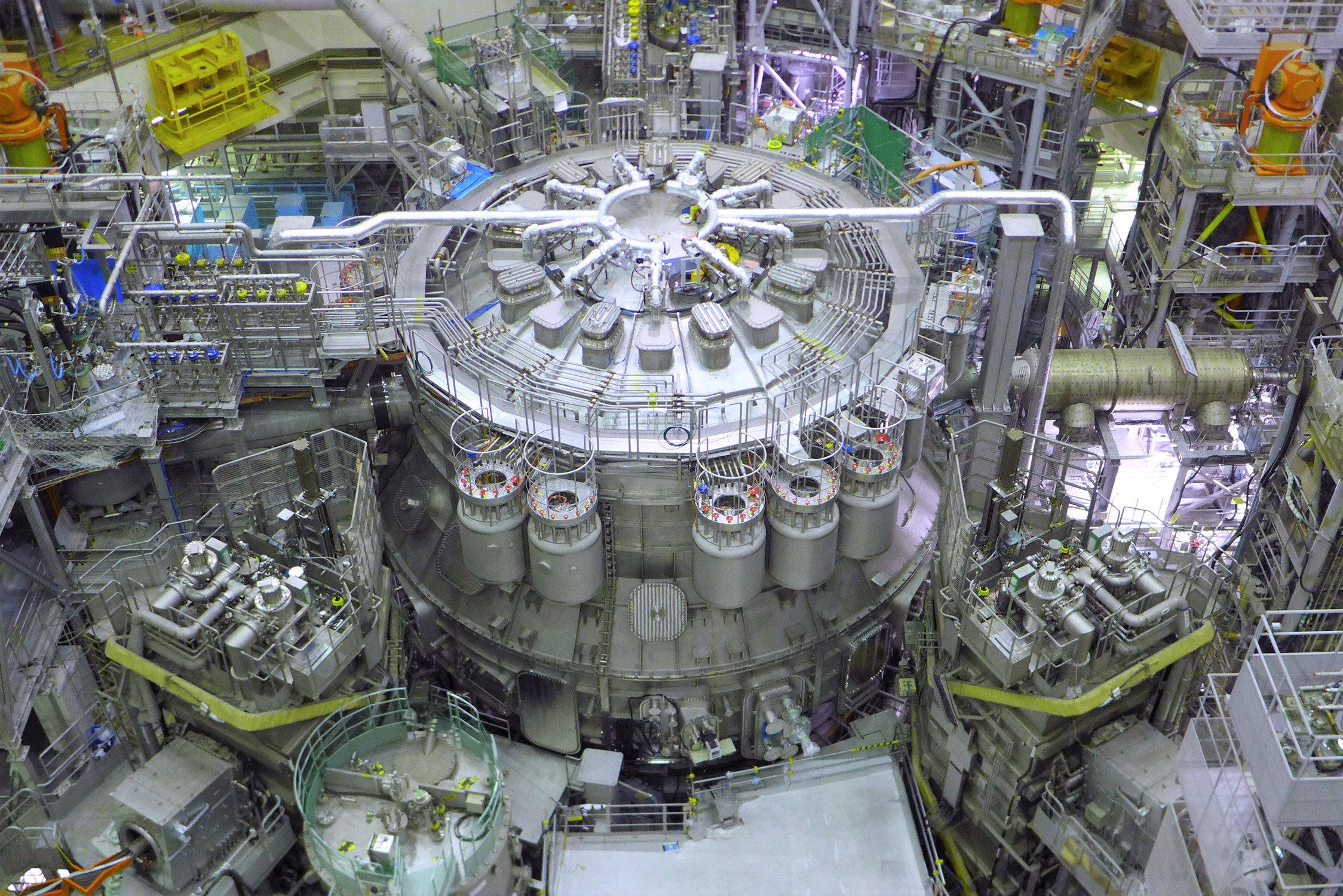Europe and Japan celebrate breakthrough in paving the way for fusion energy
The prospect of harnessing fusion energy is closer. The successful operation of JT-60SA, the most powerful experimental device to date, built by Europe and Japan, is a landmark achievement for the two parties, the scientific community and industry. It’s also a clear demonstration of their commitment to invest in this technology, which is efficient, safe, and environmentally friendly.
At a ceremony held on Friday, 1 December, the European Commissioner for Energy, Kadri Simson, together with Japan’s Minister for Education, Culture, Sports, Science and Technology, Masahito Moriyama, and Japan’s Minister of State for Science and Technology Policy, Sanae Takaichi, were joined by senior politicians, representatives from industry, and the research community, to inaugurate the JT-60SA facility and witness from the control room a plasma operation.
JT-60SA results from the Broader Approach Agreement, a scientific collaboration signed between the European Union and Japan, to promote the advancement of know-how in fusion through various projects. Works for the device started in 2007 and were completed in 2020 with the end of assembly. Since then, a series of technical improvements were carried out, with first plasma operations towards the end of 2023. The overall cost of the project for the phase of construction, is estimated to be in the range of 560 million EUR in today’s values, shared between Europe and Japan. The project is considered a fine example of science diplomacy and has been praised for the spirit of collaboration, its efficient management, and exemplary execution.
In his speech, the Director of Fusion for Energy, Marc Lachaise, praised the international collaboration and the strong team spirit of the teams involved. “What happens here today will matter tomorrow for the contribution of fusion in a carbon free energy mix. JT-60SA is key to the international fusion roadmap because it provides a one-of-a- kind possibility to learn, operate this unique fusion device and to share that valuable knowledge with ITER. Also, it allows European research laboratories and industry, jointly with Japan, to work hand in hand developing a meaningful partnership.”
Fusion for Energy (F4E), was entrusted with Europe’s contribution to the project, consisting of the management of EU funds and the co-ordination of the fabrication of components by Belgium, France, Germany, Italy, Spain, who voluntarily participated in the project. EUROfusion, the consortium of 31 European laboratories, has also been contributing, and will continue to do so, by means of hardware and personnel. Japan’s National Institutes for Quantum Science and Technology (QST), Naka, where the device is located, has been responsible for their respective contribution in terms of equipment and staff. The partnership between laboratories and industry is seen as a win-win because it has provided them with an opportunity to collaborate and successfully produce the components of the device.
The merits of fusion energy are several, converting it into a promising candidate for the energy mix of the future. The fuel it requires is abundant, avoiding the risk of geopolitical conflict, and without producing any greenhouse gases. JT-60SA will offer the scientific community the opportunity to receive more training, build further expertise, and perform plasma operations which will improve our understanding of physics. A summer school has also been established to attract future talent and receive training from some of the best experts in the field. Any new knowledge will feed directly into ITER—the biggest international fusion experiment under construction in Europe.
About Fusion for Energy
Fusion for Energy (F4E) is the European Union’s organisation for Europe’s contribution to ITER.
One of the main tasks of F4E is to work together with European industry, SMEs and research organisations to develop and provide a wide range of high technology components together with engineering, maintenance and support services for the ITER project.
F4E supports fusion R&D initiatives through the Broader Approach Agreement signed with Japan and prepares for the construction of demonstration fusion reactors (DEMO). F4E was created by a decision of the Council of the European Union as an independent legal entity and was established in April 2007 for a period of 35 years. Its offices are in Barcelona, Spain.
https://www.fusionforenergy.europa.eu/
For F4E media enquiries contact: Aris Apollonatos, aris.apollonatos@f4e.europa.eu


